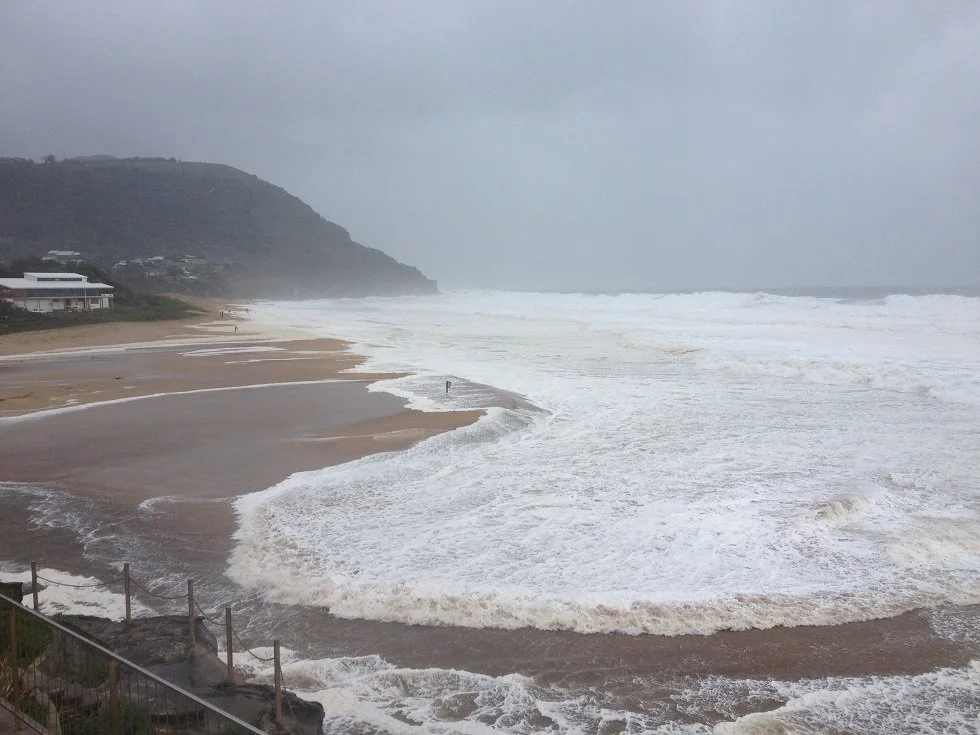Waves that sneak up on you
Modified from the May 2022 issue of the The Illawarra Flame magazine
Early April brought NSW a gargantuan swell that once again eroded our beaches. Footage emerged of sudden surges of water, looking very much like a tsunami, rushing much higher up the beach than normal, catching people by surprise, damaging infrastructure, and churning far upstream in lagoons. However, the surges weren’t caused by a tsunami, they were examples of infragravity waves.
Infra-what? Have you ever set up your towel on the beach, nice and high and dry, and everything is terrific, until you are swamped by a sudden uprush of water. Then things go back to normal. That was an infragravity wave. In the old days this phenomenon was referred to as ‘surf beat’. On the west coast of the United States, they call them ‘sneaker waves’ and this term has kind of taken over globally. Search for ‘dangerous sneaker waves’ on YouTube and you’ll see lots of videos of tourists in Iceland getting knocked over by the uprush of a sneaker wave and then chasing their backpacks being taken back down the beach by the backwash.
Infragravity waves are all about breaking waves as they are mostly created in the surf zone, which extends from where waves start to break offshore to the shoreline. All waves carry energy and most waves we see have wave periods of about 6 – 12 seconds. When they break, they release most of their energy and some of this energy is lost in noise and by forcing currents. But some of it starts sloshing around in the surf zone creating a new type of wave motion that has very long periods on the order of minutes, but with a small wave height. Yep, that’s the infragravity wave. This transfer of energy to infragravity waves increases as the normal waves get bigger. During big swell like we had in early April, it’s off the charts! The other important thing to know is that infragravity wave energy gets amplified towards the shoreline, so that when they finally ‘break’, the extreme run-up you see is really the crest of the infragravity wave. The strong backwash, where the shoreline can also retreat by a long way, is the trough.
Beaches and coasts that always have high wave energy, like the west coasts of the US and New Zealand (and Iceland!) always have infragravity waves and they are considered a big hazard with plenty of warning signs. We only get serious ones that go way up the beach during big swell or storm events when they may occur every 5 or 10 minutes or so. Still confused? That’s okay, so are most of my students. Why are they called ‘infragravity’? I dunno, something about frequency. Just call them sneaker waves.
Here comes an infragravity wave! (photo Rob Brander)

